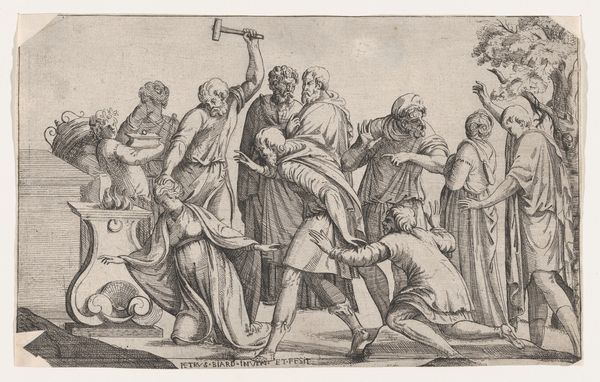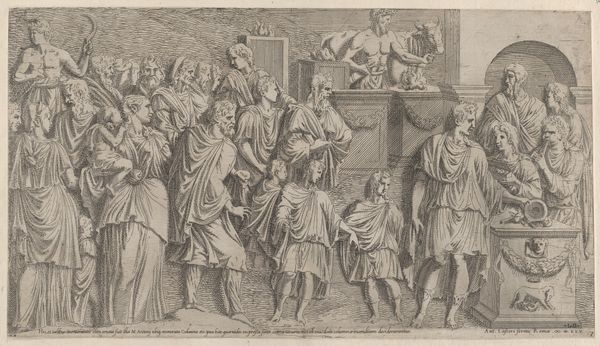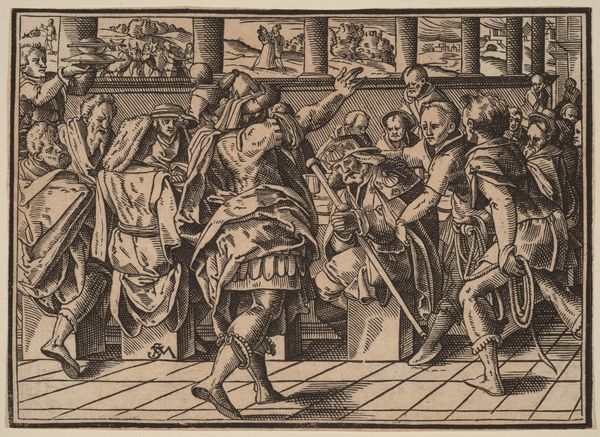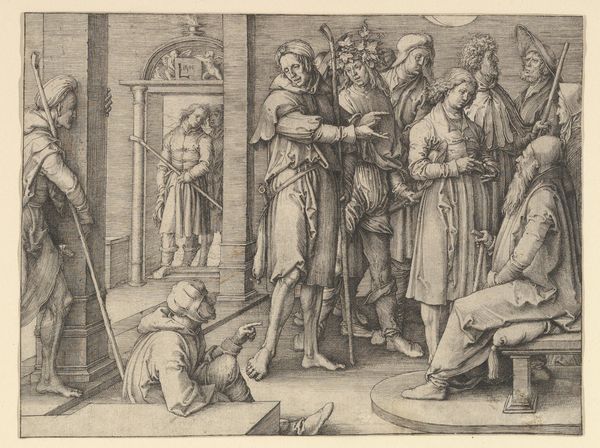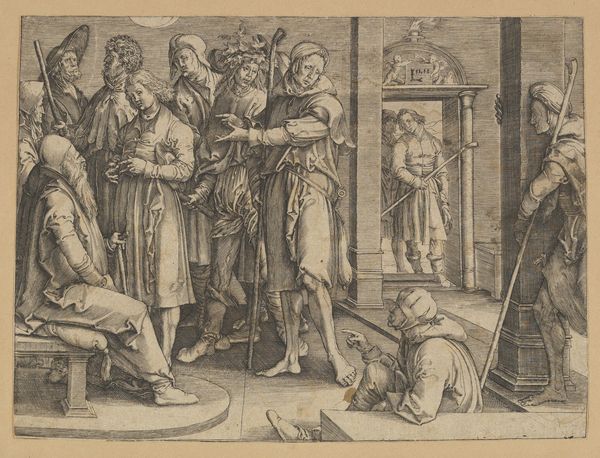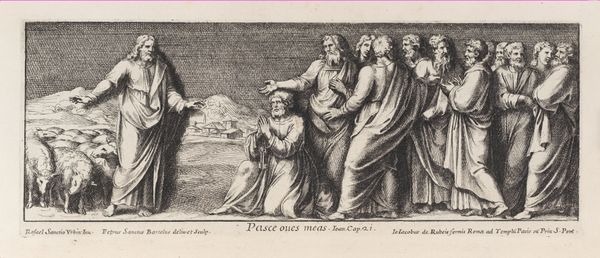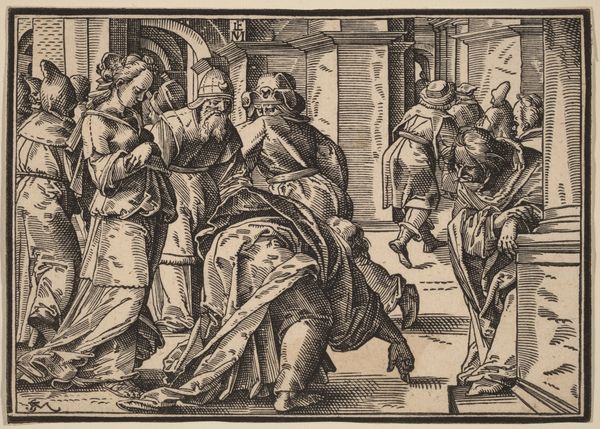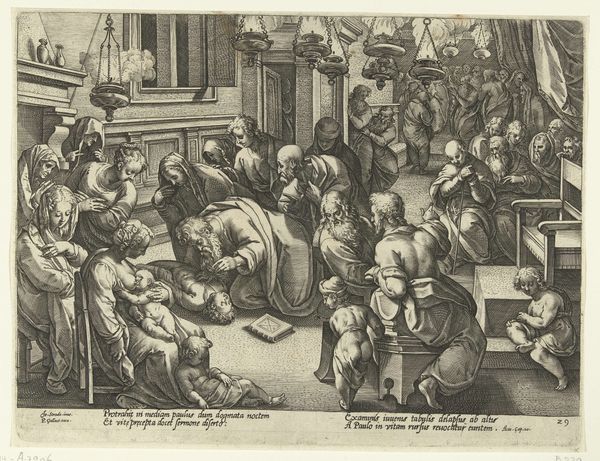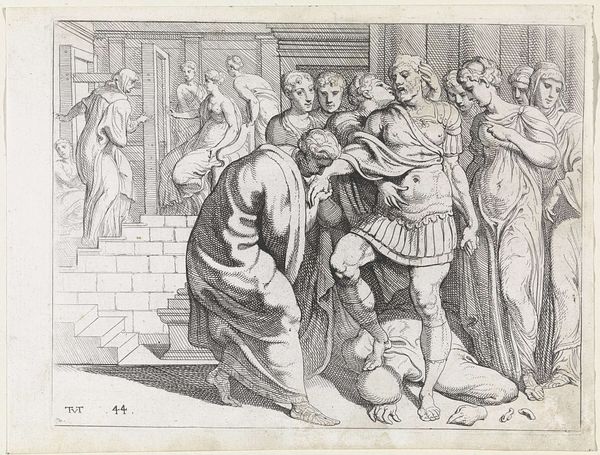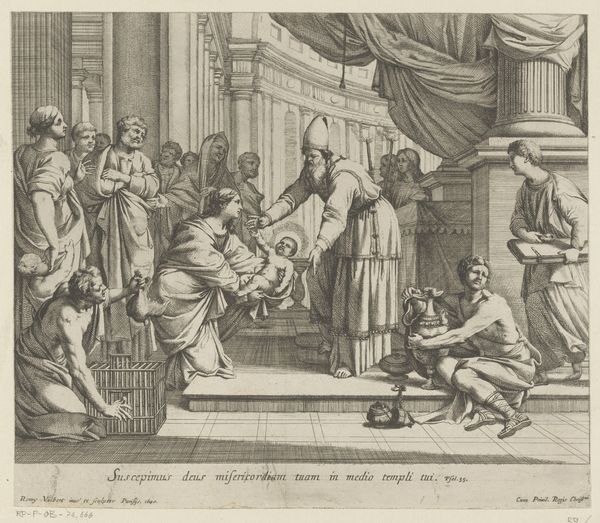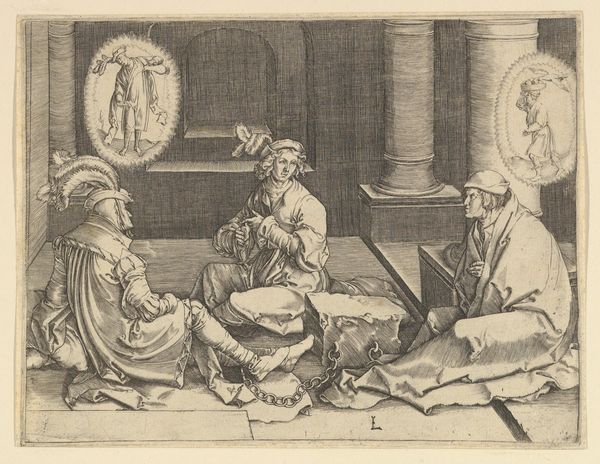
Saint Paul standing before the Proconsul, from a series of 15 plates, depicting Raphael's works for the Vatican stanze and the Sistine Chapel tapestries 1650 - 1670
0:00
0:00
drawing, print, engraving
#
drawing
#
baroque
# print
#
figuration
#
line
#
history-painting
#
engraving
Dimensions: Sheet: 4 9/16 × 11 5/16 in. (11.6 × 28.8 cm) Plate: 4 × 10 3/8 in. (10.2 × 26.3 cm)
Copyright: Public Domain
Editor: Here we have Pietro Santi Bartoli's "Saint Paul Standing Before the Proconsul," a print made between 1650 and 1670. The linear quality creates a sense of formality and even distance. I’m curious about the composition – what draws your eye? Curator: The rigorous geometry underpinning the image is paramount. Notice how Bartoli has divided the space into distinct planar zones, each populated with figures acting within their own registers. The engraving technique, with its emphasis on line, flattens the perspectival space and draws our attention to the surface. What do you observe about the arrangement of figures and how they interact across this flattened picture plane? Editor: They're certainly separated but also seem to echo each other in stance and gesture. I guess they help break up the picture, but their placement feels really deliberate. What's the point of that layering? Curator: Precisely. Bartoli orchestrates a series of formal relationships, employing devices like mirroring and counterpointing gestures. These aren't simply narrative illustrations; they are exercises in visual structure. Consider the placement of Saint Paul versus the Proconsul: the echoing of arm gestures, despite their opposed positioning, creates a formal, almost architectonic, sense of balance across the composition. Have you considered the symbolism inherent in the stylistic decisions made during the baroque era and the subject's historical importance? Editor: Not really. It’s helpful to consider the line and shapes as creating an experience on their own. Thanks! Curator: Indeed. By attending to the formal language, we perceive how meaning is generated not solely through subject matter, but through the intrinsic qualities of line, form, and composition itself.
Comments
No comments
Be the first to comment and join the conversation on the ultimate creative platform.
